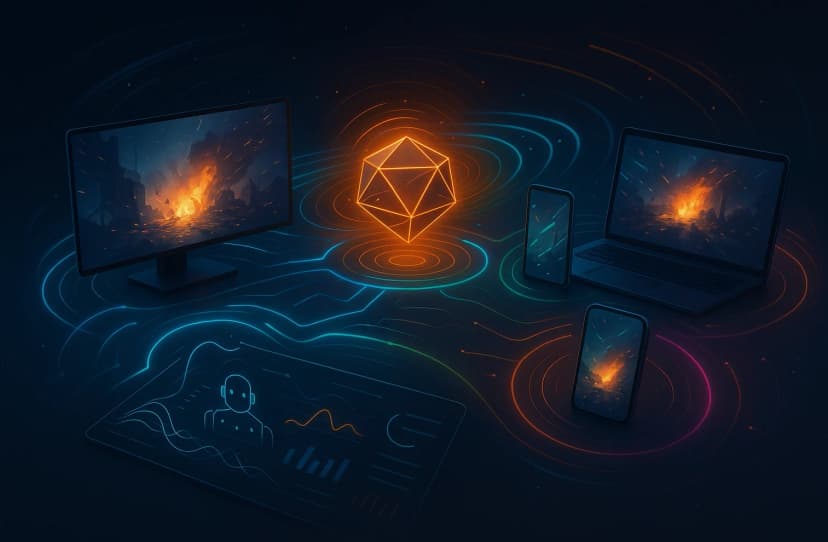Introduction
Performance is a critical factor in gaming, directly impacting player experience, engagement, and retention. Lag, low frame rates, and slow load times can frustrate players and lead to negative reviews. Performance optimization focuses on improving game responsiveness, enhancing frame rates, reducing load times, and efficiently managing memory usage. This blog explores best practices for optimizing game performance across multiple platforms.
What is Game Performance Optimization?
Game performance optimization is the process of enhancing the efficiency and responsiveness of a game by analyzing and improving various factors, including frame rates, load times, CPU/GPU usage, and memory management. The goal is to deliver a smooth, immersive, and lag-free gaming experience across different devices, from PCs and consoles to mobile platforms.
Why Performance Optimization Matters
- Player Experience: Smooth gameplay with high frame rates and fast load times keeps players engaged and reduces frustration.
- Platform Compatibility: Optimizing performance ensures that the game runs efficiently on a wide range of devices and hardware configurations.
- Retention and Monetization: Games that perform well encourage longer play sessions, increasing retention, in-game purchases, and overall revenue.
- Competitive Advantage: Optimized performance differentiates your game in a crowded market, improving reviews and user satisfaction.
Key Areas of Performance Optimization
- Frame Rate Optimization
Frame rates significantly impact the fluidity of gameplay. Optimization includes:
- Reducing Rendering Bottlenecks: Minimizing draw calls and optimizing shaders.
- Level-of-Detail (LOD) Management: Dynamically adjusting model detail based on the camera distance to reduce rendering load.
- Efficient Asset Management: Compressing textures and optimizing models to improve frame rates.
- Reducing Rendering Bottlenecks: Minimizing draw calls and optimizing shaders.
- Load Time Reduction
Long load times can frustrate players. Optimization strategies include:
- Asynchronous Loading: Loading assets in the background to prevent gameplay interruptions.
- Asset Bundling: Grouping assets efficiently to minimize load calls.
- Memory Streaming: Streaming resources dynamically based on player location or context.
- Asynchronous Loading: Loading assets in the background to prevent gameplay interruptions.
- Memory and Resource Management
Efficient memory usage prevents crashes, stutters, and lag:
- Garbage Collection Optimization: Minimizing unnecessary object creation and managing memory efficiently.
- Resource Pooling: Reusing frequently used objects to reduce allocation overhead.
- Profiling and Monitoring: Using profiling tools to detect memory leaks and optimize performance.
- Garbage Collection Optimization: Minimizing unnecessary object creation and managing memory efficiently.
- Network and Multiplayer Optimization
For online or multiplayer games, network performance is crucial:
- Latency Reduction: Optimizing data transfer and reducing ping to improve responsiveness.
- Server Load Balancing: Distributing players across servers to prevent bottlenecks.
- Data Compression: Reducing packet sizes to improve transmission speed and reduce lag.
- Latency Reduction: Optimizing data transfer and reducing ping to improve responsiveness.
- Cross-Platform Performance
Games must perform consistently across multiple platforms:
- Platform-Specific Optimization: Adjusting settings for mobile, console, and PC.
- Hardware Detection: Dynamically adjusting graphics and performance settings based on device capabilities.
- Testing Across Devices: Conducting rigorous testing to ensure consistent gameplay across different hardware.
- Platform-Specific Optimization: Adjusting settings for mobile, console, and PC.
Challenges in Game Performance Optimization
- Hardware Variability: Optimizing for a wide range of devices with different performance capabilities.
- Balancing Graphics and Performance: High-quality graphics can reduce frame rates, so optimization must balance visuals with performance.
- Multiplayer and Online Dynamics: Maintaining performance in online environments with multiple players interacting in real-time.
- Memory and Resource Constraints: Efficiently managing memory and resources to prevent crashes and lag, especially on mobile devices.
Conclusion
Performance optimization is vital for delivering a seamless, engaging, and enjoyable gaming experience. By focusing on frame rate optimization, load time reduction, memory management, and cross-platform performance, developers can ensure their games run smoothly on all devices, enhancing player satisfaction and retention. Regular performance testing and monitoring are crucial for maintaining high-quality gameplay as your game evolves.
FAQs
- What is performance optimization in games?
- Performance optimization ensures smooth gameplay by improving frame rates, reducing load times, and efficiently managing memory and resources.
- Performance optimization ensures smooth gameplay by improving frame rates, reducing load times, and efficiently managing memory and resources.
- Why is frame rate important in gaming?
- High frame rates provide fluid and responsive gameplay, which enhances the player experience and reduces motion-related discomfort.
- High frame rates provide fluid and responsive gameplay, which enhances the player experience and reduces motion-related discomfort.
- How can load times be reduced in games?
- Using asynchronous loading, asset bundling, and memory streaming can significantly reduce load times and prevent gameplay interruptions.
- Using asynchronous loading, asset bundling, and memory streaming can significantly reduce load times and prevent gameplay interruptions.
- What tools are used for game performance testing?
- Profiling tools like Unity Profiler, Unreal Insights, and platform-specific profiling software help identify performance bottlenecks and optimize the game.
- Profiling tools like Unity Profiler, Unreal Insights, and platform-specific profiling software help identify performance bottlenecks and optimize the game.
- Why is cross-platform optimization necessary?
Games must perform consistently across various devices and hardware to ensure all players have a smooth and enjoyable experience.
About Jayesh Mistry
Expert in Gaming App Testing Service with years of experience in software testing and quality assurance.
Found this article helpful?
Share it with your team!
